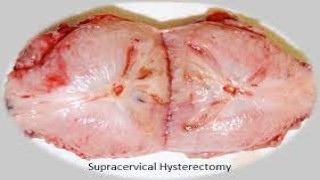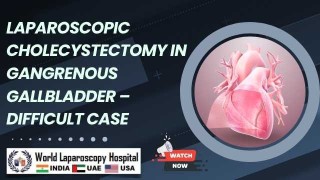One Port, Two Procedures: Simultaneous Laparoscopic Cholecystectomy and Appendectomy
Add to
Share
2,003 views
Report
2 years ago
Description
In the realm of minimally invasive surgery, the quest for efficiency and patient-centered care has led to the development of innovative techniques that allow for multiple procedures to be performed through a single port. One such technique gaining prominence is the simultaneous laparoscopic cholecystectomy and appendectomy using a single port approach. This approach offers several advantages, including reduced trauma, faster recovery, and improved patient satisfaction. The traditional approach to cholecystectomy and appendectomy involves separate procedures with multiple incisions. However, with advancements in laparoscopic instrumentation and techniques, surgeons can now perform both procedures through a single port, typically placed in the umbilicus. This technique not only eliminates the need for additional incisions but also minimizes the invasiveness of the surgeries, resulting in reduced postoperative pain, decreased scarring, and quicker recovery. Simultaneous laparoscopic cholecystectomy and appendectomy through a single port is made possible by the use of specialized instruments and advanced laparoscopic skills. The surgeon manipulates the laparoscope and instruments through the single port, carefully navigating the surgical field to remove both the gallbladder and appendix. This approach requires a high level of surgical expertise and precision to ensure the successful completion of both procedures while maintaining patient safety. The benefits of this technique extend beyond the reduced invasiveness and improved cosmetic outcomes. Performing both procedures in a single operation saves time, as it eliminates the need for separate surgeries and anesthesia administrations. This not only reduces healthcare costs but also minimizes the inconvenience for the patient, who only needs to undergo one surgical event and recovery period. Additionally, combining the procedures in a single operation may be particularly beneficial for patients with concurrent gallbladder and appendiceal pathologies, as it provides a comprehensive and efficient treatment approach. It is important to note that not all patients are suitable candidates for simultaneous laparoscopic cholecystectomy and appendectomy. Factors such as the severity of gallbladder disease, appendiceal pathology, patient's general health condition, and surgeon's expertise must be considered when determining the appropriateness of this approach. A thorough evaluation and consultation with a skilled surgeon are necessary to ensure patient safety and optimal surgical outcomes. In the realm of minimally invasive surgery, the simultaneous laparoscopic cholecystectomy and appendectomy using a single port technique has emerged as a promising approach. This innovative method allows surgeons to perform both procedures through a single incision, offering numerous benefits including reduced invasiveness, shorter operative time, and enhanced patient recovery. Traditionally, laparoscopic cholecystectomy and appendectomy are performed separately with multiple incisions. However, with advancements in surgical technology and techniques, surgeons can now combine these procedures into a single operation using a single port approach. A small incision is made in the umbilicus, through which a specialized port is inserted to accommodate the laparoscope and surgical instruments needed for both surgeries. Performing simultaneous laparoscopic cholecystectomy and appendectomy through a single port offers several advantages. Firstly, it minimizes the invasiveness of the procedures by reducing the number of incisions and surgical trauma. This results in less postoperative pain, decreased scarring, and improved cosmetic outcomes. Patients also benefit from a shorter hospital stay and a faster recovery period, enabling them to return to their daily activities more quickly. The single port technique requires surgeons to possess advanced laparoscopic skills and a thorough understanding of the anatomy and surgical principles involved in both procedures. Manipulating the instruments within the confined space of a single port requires precise hand-eye coordination and expertise. Surgeons must carefully navigate around vital structures, such as the bile duct and appendix, to ensure the safe and successful completion of both surgeries. Patients who may benefit from simultaneous laparoscopic cholecystectomy and appendectomy include those with concurrent gallbladder and appendiceal pathologies, thereby addressing multiple conditions in a single operation. However, not all patients are suitable candidates, as factors such as the severity of gallbladder disease, the presence of complications, and individual patient characteristics must be considered. A thorough evaluation by a skilled surgeon is crucial to determine the appropriateness of this combined approach for each patient. The combined procedure offers several advantages from a healthcare perspective as well. It reduces the overall cost by minimizing the need for multiple surgeries, anesthesia administrations, and hospital stays. Additionally, it optimizes operating room utilization, freeing up resources and increasing surgical efficiency. In summary, simultaneous laparoscopic cholecystectomy and appendectomy using a single port represents an innovative and efficient approach to minimally invasive surgery. This technique provides patients with the benefits of reduced invasiveness, faster recovery, and improved cosmetic outcomes. As surgical techniques continue to evolve, the integration of multiple procedures through a single port demonstrates a patient-centered approach focused on enhancing surgical outcomes and optimizing healthcare resources. In conclusion, simultaneous laparoscopic cholecystectomy and appendectomy using a single port is an emerging technique in the field of minimally invasive surgery. This approach offers the benefits of reduced invasiveness, faster recovery, improved cosmetic outcomes, and increased surgical efficiency. As surgical techniques continue to evolve, the focus on combining procedures through a single port highlights the commitment to patient-centered care and optimized surgical outcomes.
Similar Videos






